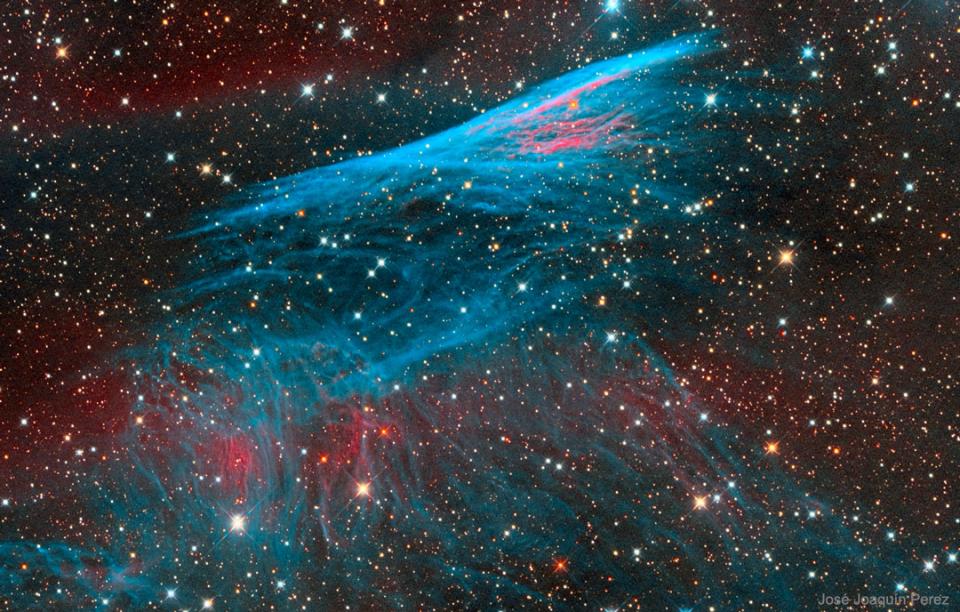Overview
- Designations: The Pencil Nebula, NGC 2736
- Object: Emission nebula
- Constellation: Vela
- Right ascension: 9h 0m 17s
- Declination: −45° 54′ 57″
- Apparent size: 30′ x 7′
- Apparent magnitude: 12
- Radius: ~5.0 light years
- Distance: 815 light years/250 parsecs

General Facts
The Pencil Nebula is an emission nebula in the constellation Vela. It is a small part of the Vela Supernova Remnant, located near the Vela Pulsar, that was left over after the supernova explosion that took place around 11,000 years ago. It is thought to be formed from part of the shock wave of the larger Vela Supernova Remnant and is the brightest part of the remnant.
The nebula was given its name because of its linear appearance. Its apparent size is 30′ x 7’ and its radius is 5 light years. It has an apparent magnitude of 12.
The Pencil Nebula is located around 815 light years away from the Solar System. It is moving at roughly 644,000 kilometers per hour (400,000 miles per hour).
The nebula was designated NGC 2736 in the New General Catalogue.
There is a relatively bright star immersed in the nebula.
History
The Pencil Nebula was first discovered by John Herschel on March 1, 1835, at the Cape of Good Hope.
Image Sources:
- Image Credit & Copyright: José Joaquín Perez – https://apod.nasa.gov/apod/ap180813.html